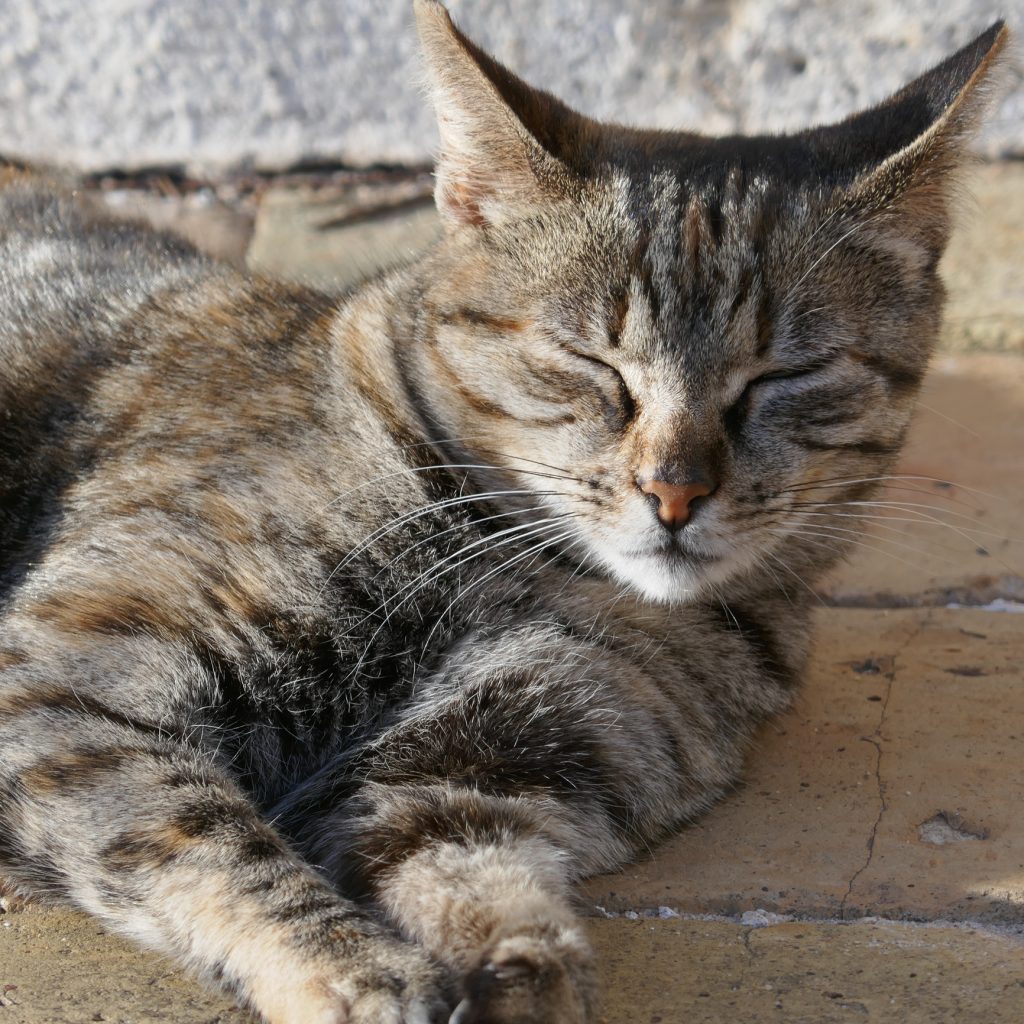Osteoarthritis is inflammation of the bones and joints. Although generally known as a problem of dogs, there are very few older cats that do not suffer from some degree of arthritic pain. The main source of pain for cats tends to be the lower back area however other joints can be affected. As they get older they find it more difficult to stand up after a sleep, become slower when walking around and struggle to jump or climb stairs. Sometimes the only change of note is that they don’t jump as high as they previously did. Some animals will ‘warm out of it’ in warmer weather, but others remain stiff. Often owners mistake osteoarthritis for general old age changes and do not realise the pain their animal is in.
In a small number of cases younger cats can acquire osteoarthritis. This may be due to injury or a congenital problem.
What can you do?
There is no cure for osteoarthritis. Stability of the joint is important, so if there is surgery available to stabilise an injured or abnormal joint, we will recommend this. Sometimes even with repair, osteoarthritis occurs anyway. For osteoarthritis associated with wear and tear on an elderly joint, there is no surgery available.
Below are some options for keeping your pets pain-free.
Nutriceuticals
These are components of food that have a pharmaceutical effect. That is, they are additives to the animal’s diet that aid in reducing inflammation in the joints. Glucosamine, chondroitin sulphate and green lipped mussel powder are all products that are available for human and animal use. As of yet there is no solid evidence that they benefit arthritic patients however we generally see some response if used in conjunction with other pharmaceuticals.
Omega 3 essential fatty acids (e.g. Fish oil) have a proven effect on inflammation in the joint and are also known to prevent progression of arthritis. We recommend all arthritic cats are on Antinol, a potent green lipped muscle formulation (a form of Omega 3s) which is available over-the-counter at vet hospitals.
Pharmaceuticals
Synovan is an injectable drug that is a concentrated anti-inflammatory and stimulant of cartilage synthesis, repair and protection for treating joint disease. A course of injections involves one injection under the skin (in the scruff of the neck), once a week for four weeks. If this is successful, the course is repeated every 6 months. This is an extremely safe drug to use with very minimal side effects but is off-label in cats (as it was originally developed for dogs). We have seen a good response in many old cats with back or hip pain and it has some preventative effects we recommend starting this early in the arthritis process.
Non-steroidal anti-inflammatories (NSAIDs) are also available and are used to reduce inflammation and pain systemically. This generally involves daily oral medication. Many older cats end up on these drugs indefinitely as it becomes the only way to provide adequate pain relief. However, many old cats suffer from kidney disease in which case these drugs should be used with caution or an alternative drug chosen. Kidney function and general health should be checked regularly if these drugs are in use and the lowest dose possible given. Although paracetamol (Panadol) is a human anti-inflammatory, it is highly toxic to cats and thus should not be given under any circumstances.
Opioid pain relief can also be provided in the form of a synthetic analogue called ‘Tramadol’. This does not have anti-inflammatory effects but rather provides general pain relief. It is often used in conjunction with the above medications or when NSAIDs cannot be used due to concurrent disease. However it’s effects are variable and cats will quite often hypersalivate when medicated. For this reason we don’t tend to recommend it.
Occasionally other medications may be suggested by your vet such as Gabapentin (a neuropathic pain-relief) or anti-inflammatory doses of cortisone (or prednisolone).
Exercise
Exercise is crucial in making sure all joints regular carry out their full range of motion. However it can be quite difficult to get your cat moving! Encouraging them to walk around the house and garden is beneficial. Some will even tolerate a harness and lead so they can go on short walks.
Alternative therapies
Acupuncture and physiotherapy are now available for our pets. Your general vet can provide you with more information.
Diet & weight management
Obesity is a common problem associated with arthritic cats and only leads to further stresses on the joints. Keeping your cat slim and monitoring its diet will ease the pressure on joints and thus the associated pain. There are many commercial prescription diets available for arthritis which contain high levels of omega 3 fatty acids and other supplements. Alternatively a weight loss diet may be used with added supplements. Please speak to your vet for specific recommendations for your cat.



